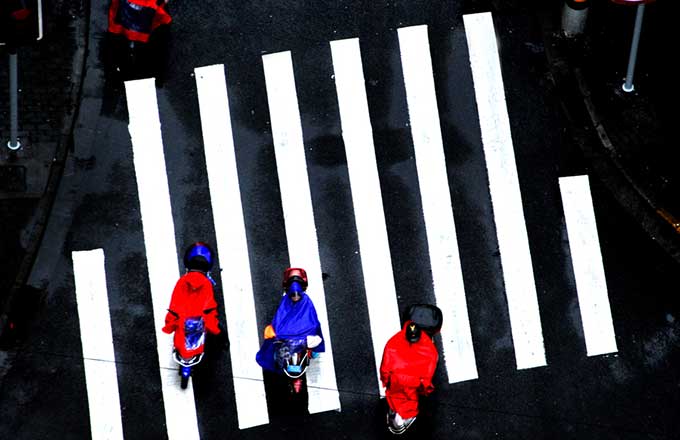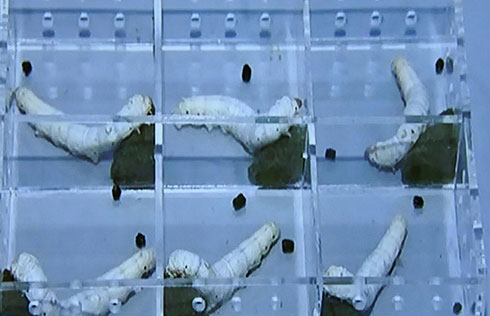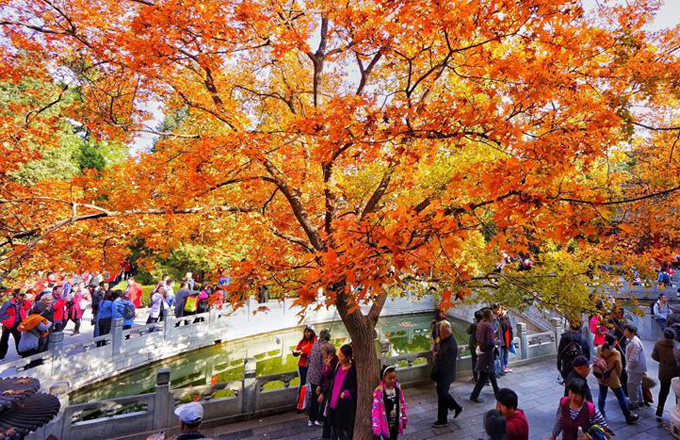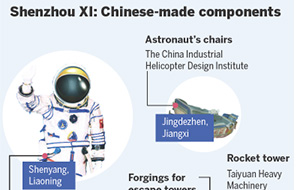Demand for air monitors helps companies clean up




A national challenge
Controlling PM2.5 intensity should be raised to a national level during the national conference on environmental protection in Beijing, which begins on Thursday, said Zhou Shengxian, China's environment minister.
"The network of real-time air quality monitoring on PM2.5 will cover 113 cities throughout the country in 2013," he said. He has also announced a ban on the use of vehicles registered before 2005, under exhaust-emissions requirements, although details are sketchy at present.
The growing concern about air pollution has spurred sales by, and investment in, Chinese green-technology companies, especially those that manufacture air quality monitors and air purifiers.
In the two weeks that the capital has been shrouded in smog, Suzhou Beiang Technology Co has seen sales revenue exceed 1.5 million yuan ($241,000). In 2012, the company, based in Suzhou, Jiangsu province, manufactured and sold approximately 2,000 ionic-wind air purifiers for homes, offices and cars, earning 5 million yuan in the process. Half of its customers are located in Beijing, while the others are in Shanghai and the provinces of Jiangsu and Zhejiang.
"Actually, it won't be a problem for our sales revenue to hit 3 million yuan this month, but our production capacity is unable to meet the huge demand, so we had to stop taking orders," said Ran Hongyu, the company's founder and president. "We expect sales revenue to reach more than 30 million yuan this year," he added.
The company is supplying more equipment and manpower to its factories to increase productivity. It has also set a target to raise 30 million yuan, leading a number of venture capital firms to express interest. Ran said the company will develop several air purifiers to fit different room sizes and will later begin large-scale production of air quality monitors, which are currently imported from the US.
"Every year, about 5 million air purifiers are sold in the US at an average price of $200. About 25 percent of US families have air purifiers," he said. "Here in China, the number of families is much larger and the level of air pollution in cities is much higher. The Chinese market for such products should be three to four times bigger than in the US."
Beiang Technology is not the only company witnessing huge changes. In 2012, Hebei Sailhero Environmental Protection Hi-tech Co sold air-quality monitors to monitoring stations in 23 Chinese provinces, and the company estimates that net profit increased by 14 to 29 percent year-on-year.
Since the Chinese authorities imposed stricter standards on air-pollution monitoring last year, government investment in each monitoring station has almost doubled, rising from 500,000 to 600,000 yuan to more than 1 million, said Liu Guoyun, assistant to the president of Hebei Sailhero. Many monitoring stations have already added visibility-depth monitors and environmental photography systems to their equipment.
Hebei Sailhero is conducting R&D into combined air-pollution monitors, which can identify both turbidity and the concentration of volatile organic compounds and heavy metals in the atmosphere. The company is also conducting a pilot project in Shijiazhuang, Hebei province, to build a combined air-pollution monitoring and early warning platform.
The platform will collect data from key monitoring areas such as factories and main roads, before identifying the source of the pollution and providing local environmental protection bureaus with suggestions on the appropriate measures to take.
"Given that our company holds more than 30 percent of the domestic industry's market share, and the PM2.5 monitoring network will be expanded to 113 cities from 74 this year, we expect sales revenue to increase by more than 20 percent," said Liu.
Completing and maintaining a world-class air-quality monitoring network nationwide is just a first step, according to David Vance Wagner, senior researcher at the International Council on Clean Transportation.
"I think the more important long-term challenge for China is to implement stringent emission controls that will effectively reduce the emission of pollutants and improve air quality," he said.
Wu Wencong and Zhang Yuchen contributed to this story.
Contact the reporters at yuwei12@chinadailyusa.com, cecily.liu@chinadaily.com.cn, zhangchunyan@chinadaily.com.cn and jiangxueqing@chinadaily.com.cn
- Varied measures needed to solve air pollution
- Air China launches Beijing-Geneva nonstop service
- Smog worries boost online sales of air purifiers
- Ongoing smog worries boost online sales of air purifiers
- 'Joint effort' urged to clear the air
- Beijingers call for Clean Air Act
- How long could China solve air problem?
- Air quality a hot topic














